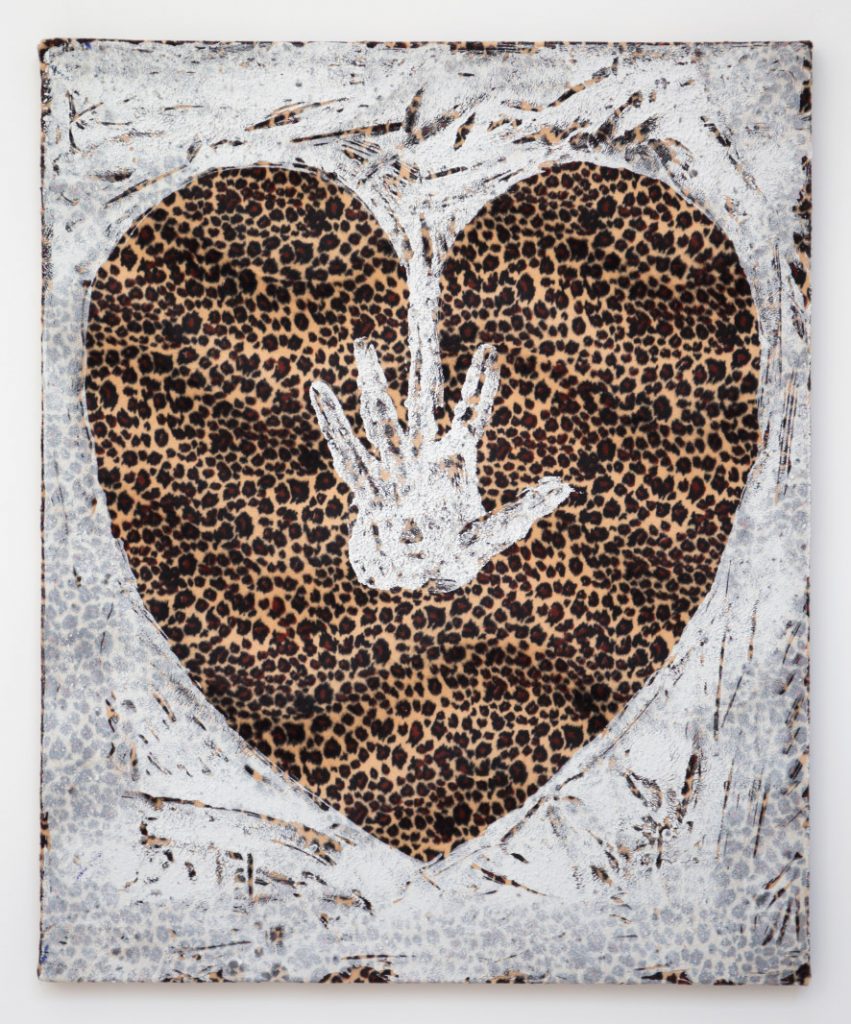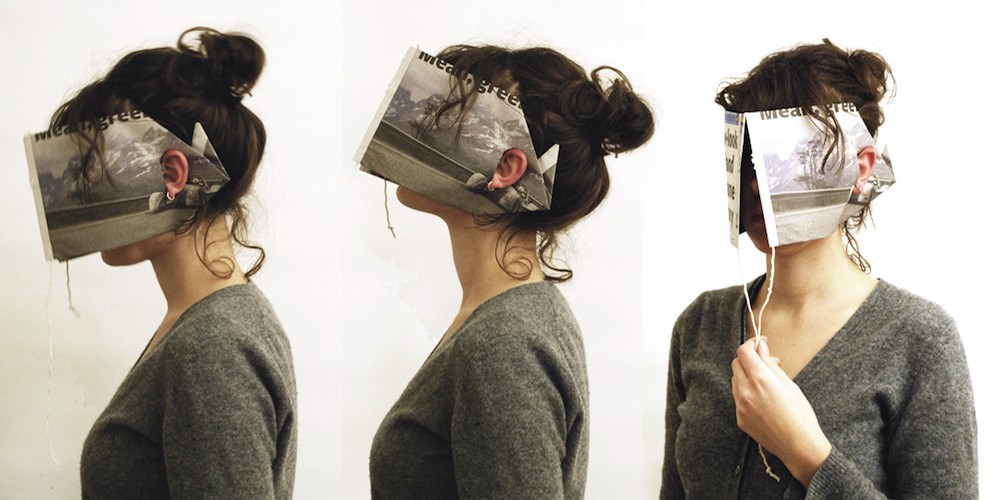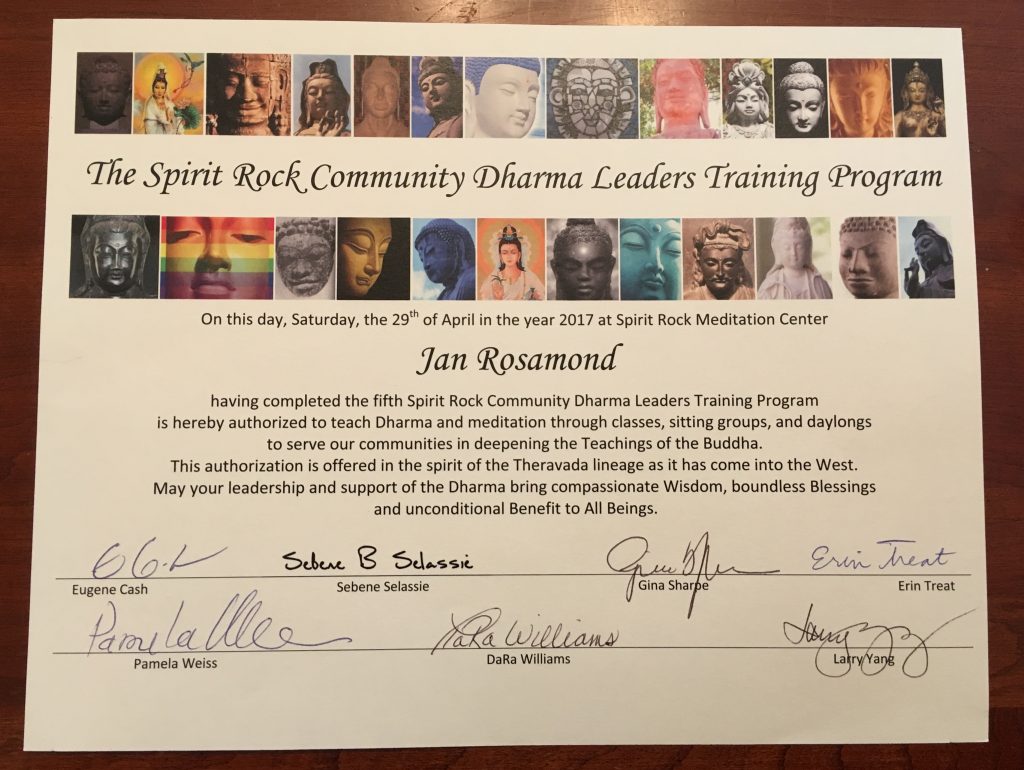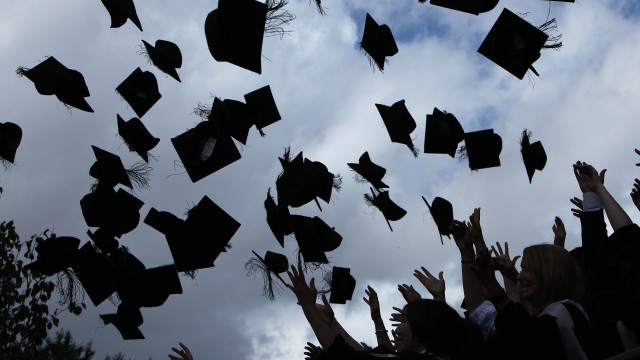Sustainable Abundance
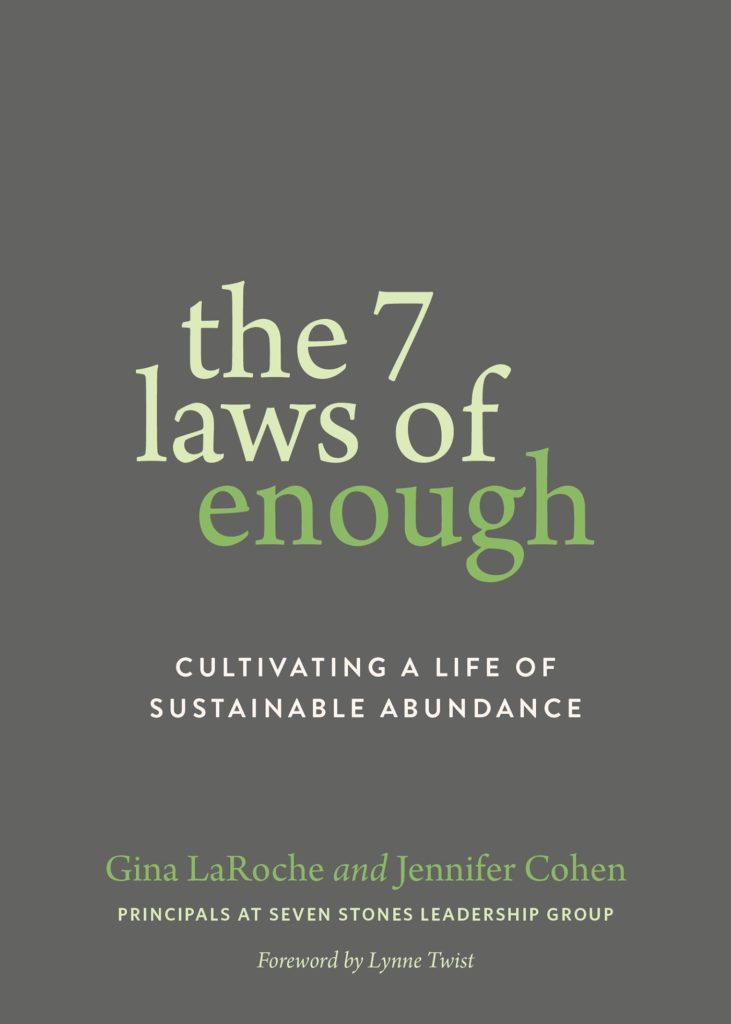 A shout-out today for my fellow Community Dharma Leader, Gina LaRoche, whose new book The 7 Laws of Enough: Cultivating a Life of Sustainable Abundance (co-authored with her business partner Jennifer Cohen) has just been released!
A shout-out today for my fellow Community Dharma Leader, Gina LaRoche, whose new book The 7 Laws of Enough: Cultivating a Life of Sustainable Abundance (co-authored with her business partner Jennifer Cohen) has just been released!
Here’s an excerpt:
“What if the truth is that everything is OK? Like, Garden of Eden OK?
“It’s hard to imagine. But it is the truth of sufficiency. Here are the facts: there is enough food, air, water, and other necessities for every human being on the planet to live a quality life, full of resources and abundance…
“You are enough. You do enough. You have enough, already. If you were to orient to life, to your team, your family, and society as if that were true, we guarantee you would see life in a whole new way. You would ask different questions and frame problems differently. New solutions would emerge….
“We call this bounty ‘sustainable abundance.’ Sustainable: ethical, reciprocal, just. Abundance: grateful, radiant, and present to the bounty everywhere….
“Law 1: Stories Matter. We are living in a web of stories, most of them not of our own making. We’ll help you go from being stuck in your inherited stories to being the author of stories that further your life’s purpose.
“Law 2: I Am Enough. You are. I am. We are. When we stop questioning our birthright everything shifts.
“Law 3: I Belong. Everyone does. No one has the right to tell us otherwise. We live in a culture that teaches us we’re separate and has a vested interest in making us feel as if we don’t belong.
“Law 4: No One Is Exempt. We’re set free when we accept impermanence and face what is finite and infinite. This helps us see through the lies of scarcity.
“Law 5: Resting Is Required. Society encourages us to be overworked, overmedicated, overfed, undernourished, and terrified. We crave the kind of deep rest we have almost lost. We can and must reclaim it.
“Law 6: Joy Is Available. We can find deep and abiding joy when we see clearly, let go of the lies, and notice what we have already.
“Law 7: Love Is the Answer. This is the final law and our deepest truth. Love is the answer to the questions that plague our society and come our hearts.”
***
Way to go, Gina!!!
A Different Kind of “Me Too”
The Spirit Rock News magazine just came out and it features an interview with Phillip Moffitt as he begins to transition out of his role as Co-Guiding Teacher. I am a big fan of Phillip, so of course I was interested in what he had to say, but he was talking about his role as a leader of the Spirit Rock organization, so I wasn’t really expecting him to say anything of particularly relevance to me.
I was wrong.
Phillip is asked: “You came into this leadership role with decades of experience as an educational and business leader; how have the special qualities of this particular role affected your own experience of leadership?”
Phillip answers: “The more one lets go of what one wants, the more effective one is as a leader in this community.”
[Given my new role as a Community Dharma Leader, this got my attention.]
Phillip continues: “…As an entrepreneur, I was the leader of a small team who made fast, decisive decisions; this did not involve a slow consensus process. I had to let loose of my style of decision-making and surrender to the consensus process that we go through here. Being willing to spend my time in such a process required a new orientation to leadership, and new priorities.
“Friends would ask; why are you willing to spend the time? To be fully revealing, for the first few years it was a struggle. At Spirit Rock, a leader does not so much “make their mark,” as they have to continually hold the values and possibilities for how the organization can function and how its people skillfully relate to one another and develop as practitioners.
“Over time, I realized this required more of a nurturing heart quality than the dynamic quality of my previous style of naming what was needed and implementing it. To my surprise, this shift in perspective turned out to be the “why” — the very act of leading in this manner and the change required was the reward.
“I would describe it as a two-decade practice of “letting go” of being the strong, decisive leader with clear views, and instead leading by building a common view through kind attention.
“Such a practice was not my goal. I was not initially suited for such a role. I had no idea how much wisdom comes from kindness, patience, and just letting go.
“And yet that’s how it ended up–a kind of renunciation of the way I related to the world that had previously allowed me to survive a challenging childhood and to thrive on a large worldly stage.”
***
Wise advice, Phillip. I recognize myself in your story. May I learn from your experience. May I take these words to heart.
What We Imagine Ourselves to Be
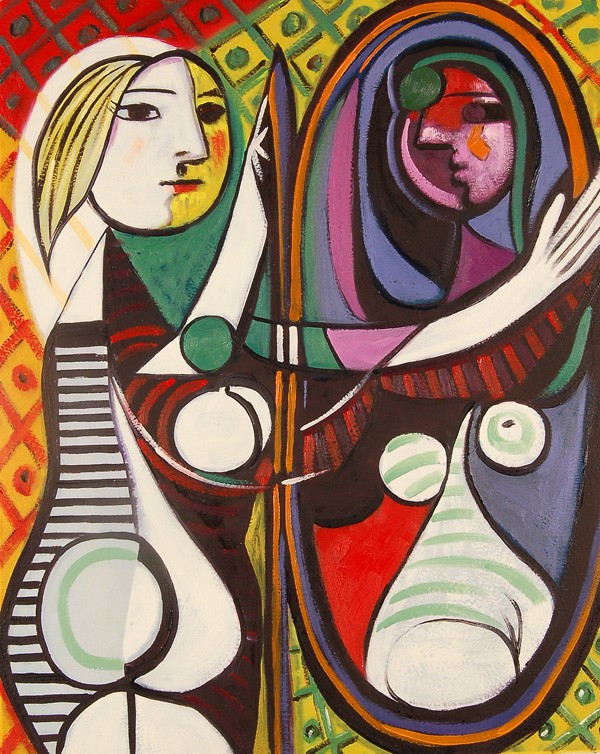 Another one of the readings that’s part of the first session of the “Waking Up to Whiteness” program I posted about yesterday is an article written by Bhikkhu Bodhi, titled: Taking Stock of Oneself.
Another one of the readings that’s part of the first session of the “Waking Up to Whiteness” program I posted about yesterday is an article written by Bhikkhu Bodhi, titled: Taking Stock of Oneself.
Here is an excerpt:
“Normally, in subservience to our need to confirm to ourselves our uniqueness and irreplaceable importance, we proceed to construct mental pictures–indeed, a picture gallery–of what we imagine ourselves to be.
“The self-image that emerges from these pictures becomes simultaneously a mainstay which we cling to in order to maintain our self-esteem and a standpoint from which we orient ourselves toward others and launch our projects in the world. To secure its tenuous status. the mind employed a variety of tactics ‘behind the back’ of our conscious awareness.
“It throws up blinders which keep out disturbing information; it flatters us with fantasied projections; it drives us to manipulate people and situation in ways that will seem to validate our tacit assumptions about our virtues and identity.
“All these projects born of the quest to substantiate our sense of identity only increase our suffering. The more we lock ourselves into the images we form of ourselves, the more we alienate ourselves from others and close off our access to liberating truth. Thence release from suffering requires that we gradually discard our delusive self-images through rigorous examinations of our minds.
“The venerable Sariputta, in the Discourse on No Blemishes (MN5), stresses the role of honest self-assessment as a prerequisite of spiritual growth. He points out that just as a dirty bronze bowl, deposited in a dusty place and utterly neglected, only becomes dirtier and dustier, so if we fail to recognize the blemishes in our minds we will not make any effort to eliminate them, but will continue to harbor greed, hatred and delusion and will die with a corrupted mind….
“The task of self-knowledge is always a difficult one, but it is only by knowing our minds that we will be able to shape them, and it is only by shaping our minds that we can liberate them.”
***
And so we begin.
I Didn’t Know I Was Suffering
I am so grateful for what I learned — for what I have been released from — by working through the “Waking Up to Whiteness” curriculum (organized by members of the East Bay Meditation Center) that I have just formed a new “Waking Up” group and will go through the program again with them.
One of the readings the group will be discussing during our first session is a letter written by Kristin Barker, one of the organizers of the curriculum. Here’s an excerpt:
“There’s good reason we find this work so challenging! In the US, whiteness is made, by whiteness, invisible. In my own life, I was taught not that I was ‘white’ but that I was ‘normal.’ Being ‘just a normal person,’ I was trained to believe that any advantages I have achieved in this life, whatever they are, were owed to my own merit, hard work, or at most to my ‘good fortune.’
“The notion that I have benefitted — and continue to benefit enormously — from not just historical but from the ongoing oppression of others was quite understandably disturbing to my sense of self….
“Suddenly I became aware that people of color knew something about me that I didn’t know, that I was, for instance, wrong in conceiving of myself as ‘normal’ and that I was unknowingly benefiting from — and even perpetuating — the dominance of white people. People of color knew I was white and they knew, so much better than I, what that meant in this world…
“And of course this would challenge me deeply for how painful it is to recognize my role in oppression when I don’t experience myself as ‘doing anything wrong.‘ The only upside to these realizations seemed to be my interest — shaky at times — in truth. And yet there was something more.
“The truth is that I didn’t know I was suffering. The understanding of deep interdependence means that operating in a culture that objectifies, exploits and oppresses, even and especially when hidden from the dominant view, divides the heart against itself. It can be deeply challenging to lean into this. To be willing to look and not waiver is to open to suffering on a massive scale…
“But this is what I want to share and why I wanted to write this letter. The upside is no much greater than I knew, so much greater than just ‘accepting the hard truth’ like a bitter pill. I submit that the upside isn’t even learning to do less harm to people of color, although that is a necessity.
“The upside is wholeness. I have found that, just as promised, if I can turn towards the suffering of racism, against my ego’s self-protecting tendencies, I do experience pain — yet I come to suffer less.
“Some resistance is released. Some wall is dissolved. I may be bewildered and disoriented, but I am strangely more whole. From this place there seems the potential to be (with time and practice) more honest, more courageous and perhaps more truly useful to the causes that move me. My relationships with people of color are more authentic. I can occupy my own location of privilege with more honesty and so much less to defend….
“As uncomfortable, as painful, as disconcerting, as overwhelming as it may be, we have the opportunity to respond individually and collectively, supporting one another in seeing through delusion and making a new way…
“I believe we have an incredible opportunity to know deeply the ways that racial divisions, and all forms of division, maintain our suffering. And in so doing we can not only make ourselves more whole but we can radiate whatever understanding we develop out into our world.…
“May we be wildly successful!”
***
Kristin completely captures my own experience in going through the program. It was hard, but it was liberating!!!
If you’d like more information about the “Waking Up to Whiteness” curriculum or are interested in forming a group of your own, please email me here.
To Live in Harmony with This Truth
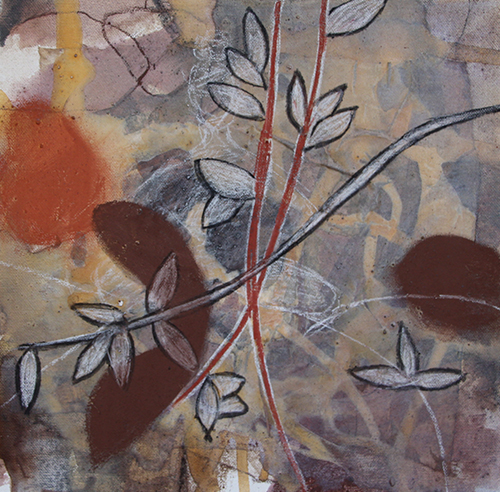 Today’s post is in honor of Pauletta Chanco — artist, teacher, fellow CDL graduate — who passed away yesterday at her home in California, surrounded by family, held in love.
Today’s post is in honor of Pauletta Chanco — artist, teacher, fellow CDL graduate — who passed away yesterday at her home in California, surrounded by family, held in love.
All conditioned things are impermanent.
Their nature is to arise and pass away.
To live in harmony with this truth
Brings true happiness.
***
Painting by Pauletta Chanco: Journey to Transcendence 1
Shower of Vows
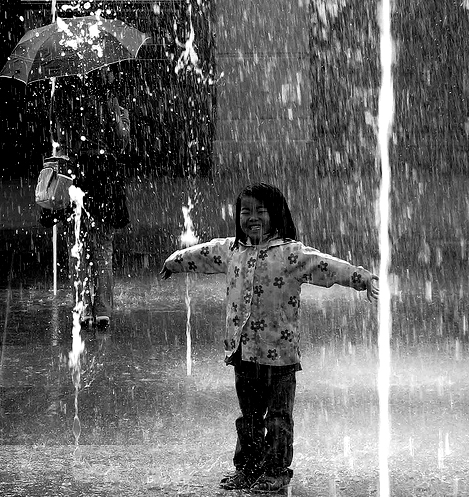 It’s been just over a week now and I see that the Community Dharma Leader (CDL) graduation is still having a strong effect on me. One part of the ceremony in particular — a beautiful ritual called “Shower of Vows” — still reverberates. Here’s how it went:
It’s been just over a week now and I see that the Community Dharma Leader (CDL) graduation is still having a strong effect on me. One part of the ceremony in particular — a beautiful ritual called “Shower of Vows” — still reverberates. Here’s how it went:
A few days before the final ceremony, we were each given two, blank index cards. After reflecting together on some of the highlights of the two-year program and sitting together in silence for a while, we were asked to formulate a vow we would like to carry forward into the future (for example: to cultivate patience, or to read all the suttas, or to more actively address issues of social injustice in our community, etc.) and then to write that vow on one side of one of the the blank cards. On the other side, we were asked to list at least three concrete, practical actions we plan to do to help carry out that vow, and then to list the name of at least one person we can call on to support us in that effort. We were given plenty of time to do this, as I recall. Then we were asked to get together in groups of three to share what we had written (if that felt appropriate) or to share what the process of trying to do it had been like (if that felt more helpful). And then we were asked to leave the card (which we did not put our name on), vow-side-up, on the back altar (which we all passed as we went out of the hall), so we could look at them — if we wanted to — and get a sense of the breath and depth of the intentions that were alive in the room. (We would then pick these cards up again at the end of the graduation ceremony to keep as a reminder of the vow — and the action plan — we had made.)
On the second card, we were asked to write just the vow once again, then to take that card back to our rooms, and bring them back with us to the graduation ceremony on the final day.
Then during the ceremony, after the teachers each said a few words and before we all lined up to receive our certificates, we recited together the Refuges and Precepts, and then we were asked to say our vow aloud — all together, in a “shower” of voices, so that all the vows were sent out into the room, as a collective, with no individual voice or vow distinguishable from any other — and then, as we each went up to the front of the room to receive a blessing chord and our certificate, we placed the written vow into a basket on the front altar, and then bowed. (These would then be burned in a ritual along with all the other written messages that are left on the back altar and collected after every retreat.)
I won’t say here what my vow was. Because it’s private. But I will say that the private/public aspect of the ceremony was an important part of my taking of that vow, which — very much because it was taken in that individual/collective way — now seems to have soaked deep into the very center of my being.
May it be so.
This Is Us
I don’t think this is the official graduation photo — although who knows, this is a very unorthodox program! — but it’s one of the photos that were taken as we were getting ready to graduate…that is, about to be let loose into the world as brand new Community Dharma Leaders!
You can’t tell by looking at the photo (even after clicking to enlarge), but this is absolutely, positively the most diverse group of people I have ever been a part of. Not just in terms of race — although there certainly was that — but also in terms of gender identity, body size, sexual orientation, age, nationality, language, economic status, cultural background, religious tradition (we’re not all Buddhists!), level of formal education, health, other-able-bodied, marital status, family configuration, etc etc etc. (In case you can’t tell, I’m the late-middle-aged, upper-middle-class white woman, with glasses and pink-and-silver hair, wearing a striped sweater, near the middle of the pack, on the right.)
It wasn’t easy to navigate all these differences. But it was possible.
And it was liberating.
Look out world. Here we come!!!
It’s Official
Just a quick post today because my back is still seized up (since half-way through the retreat!) and I’m trying to stay horizontal as much as possible to give it time to relax and restore itself. (I hope to post more tomorrow, but can’t promise.)
***
I am now an official graduate of the Spirit Rock Community Dharma Leader Training Program. What exactly that means for me, in terms of what’s different, is yet to be seen. But one thing I’ve learned so far is that it’s good not to have a fixed view about the way things “should” unfold.
Here’s what the certificate says:
On this day, Saturday, the 29th of April in the year 2017 at Spirit Rock Meditation Center, Jan Rosamond, having completed the fifth Spirit Rock Community Dharma Leaders Training Program is hereby authorized to teach Dharma and meditation through classes, sitting groups and daylongs to serve our communities in deepening the Teachings of the Buddha.
This authorization is offered in the spirit of the Theravada lineage as it has come into the West. May your leadership and support of the Dharma bring compassionate Wisdom, boundless Blessings and unconditioned Benefit to All Beings.
***
May it be so.
Contemplating with Fascination
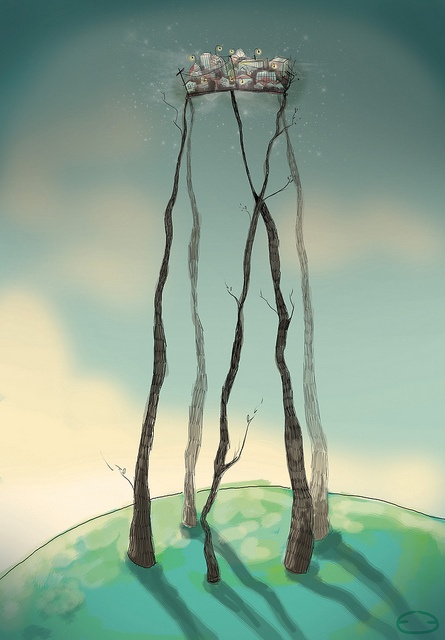 In honor of Earth Day (tomorrow) and in support of the March for Science scheduled to celebrate the occasion on the National Mall, I offer this selection from Invisible Cities, by Italo Calvino, (which I always consult before leaving home, as I am about to do, to complete the final segment of the Community Dharma Leader training program):
In honor of Earth Day (tomorrow) and in support of the March for Science scheduled to celebrate the occasion on the National Mall, I offer this selection from Invisible Cities, by Italo Calvino, (which I always consult before leaving home, as I am about to do, to complete the final segment of the Community Dharma Leader training program):
Cities & Eyes 3
After a seven days’ march through woodland, the traveler directed toward Baucis cannot see the city and yet they have arrived. The slender stilts that rise from the ground at a great distance from one another and are lost above the clouds support the city. You climb them with ladders. On the ground the inhabitants rarely show themselves: having already everything they need up there, they prefer not to come down. Nothing of the city touches the earth except those long flamingo legs on which it rests and, when the days are sunny, a pierced, angular shadow that falls on the foliage.
There are three hypotheses about the inhabitants of Baucis: that they hate the earth; that they respect is so much they avoid all contact; that they love it as it was before they existed and with spyglasses and telescopes aimed downward they never tire of examining it, leaf by leaf, stone by stone, ant by ant, contemplating with fascination their own absence.
***
Note: In a spirit of inclusivity (heightened by my participation in the CDL program), I have changed the gender pronoun of Calvino’s traveler above from “he” to “they”.
Also note: I’ll be back in Dharma Town, ready to post again on Monday, May 1. (May Day!) Check back then.
Graduation Celebration
I leave on Saturday to go back to Spirit Rock for the final Community Dharma Leader (CDL) training retreat, which I have recently discovered will include some kind of formal-sounding Graduation Ceremony (“formal” as in they’ve encouraged us to invite guests!)
I wasn’t expecting this. When I “graduated” from the Dedicated Practitioner Program (DPP) in 2013, we’d had a little ceremony at the final retreat — where each of our names were called and we each walked up to where the teachers sat and were given a certificate and a blessing chord and a little silver Buddha “charm” as the big bell was being rung. There was a group photo too, as I recall, and a general spirit of accomplishment and celebration. But there had been no announcement about any of this prior to the event, and guests were definitely not part of the deal.
So it seems like the teachers have something a little more officially ceremonial planned to mark this occasion. When I first got wind of this, I felt a little embarrassed. Like: Really? Aren’t We Kind of Past That Sort of Thing?
But now I have to admit, I’m looking forward to it. This program has made me grow in ways that I hadn’t expected, hadn’t intended, and certainly hadn’t been all that thrilled about (in the beginning), because it meant facing my own complicity with systemic racism, my own blindness to the sense of entitlement that I took for granted, and my cozy attachment to “the way things have always been done.”
But now that I’ve actually pushed through (been pushed through?) some of the barriers that had kept me separated from people (and situations) I felt not-entirely-comfortable-with, I see how limiting that was. How constricting. And how impoverishing — for ME! As well as for everyone else. Now that I’ve relaxed a bit about feeling less-than-entirely comfortable — I’ve discovered that I feel a whole lot more free! Free to say no. To say yes! To lead. To follow. To fail. To succeed!!!
***
So I’m ready to celebrate. And this is only the beginning. Stay tuned.

